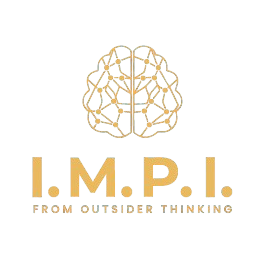Doctoral research is often constrained by rigid academic frameworks that prioritize traditional methodologies over context-specific solutions. This is particularly challenging in regions like Africa, where unique societal, economic, and environmental contexts demand creative, adaptable approaches.
The I.M.P.I. ™ Model—a structured framework encompassing Idea, Model, Protocol, and Implementation—offers doctoral students a customizable methodology to address complex issues while maintaining academic rigor. Its flexible design enables researchers to adapt their studies to local realities, creating impactful and pragmatic solutions.
Challenge
A cohort of doctoral students in a multidisciplinary research program at a leading African university struggled to develop actionable, context-specific solutions to pressing issues such as water scarcity, waste management, and health service delivery. Their reliance on conventional academic methodologies hindered their ability to propose innovative, scalable interventions aligned with regional needs.
Application of the I.M.P.I. ™ Model
Idea
Each student identified the core problem within their research domain, focusing on practical needs in their community. For example:
- Environmental Science: Developing a cost-effective model for waste recycling in urban slums.
- Health Sciences: Enhancing access to maternal health services in remote areas using mobile clinics.
- Agriculture: Designing climate-resilient farming systems for semi-arid regions.
By utilizing the I.M.P.I. ™ Model, students framed their research problems with an emphasis on real-world applicability, guided by an iterative process of questioning and refinement.
Model
The students constructed models tailored to their research objectives:
- In waste recycling, the model included low-cost materials and local labor integration.
- For maternal health, the model used mobile health units with a referral system to nearby clinics.
- In agriculture, the model focused on integrating traditional knowledge with modern irrigation techniques.
Each model was grounded in contextual realities, ensuring feasibility and cultural relevance.
Protocol
Protocols were established to test the viability of their models:
- Waste Recycling: Piloting a community-led sorting and collection initiative in one urban neighborhood.
- Maternal Health: Deploying mobile health clinics in three remote villages and monitoring their reach and effectiveness.
- Agriculture: Setting up demonstration plots to compare yields between conventional and climate-resilient farming practices.
The protocols ensured systematic testing and evaluation while maintaining flexibility for iterative adjustments.
Implementation
The students implemented their solutions, guided by the I.M.P.I. ™ Model’s emphasis on scalable and replicable designs:
- Waste Recycling: The pilot demonstrated a 60% reduction in landfill waste within three months, leading to city-wide adoption.
- Maternal Health: The mobile clinics recorded a 30% increase in antenatal visits, with plans to expand to additional villages.
- Agriculture: Yields from climate-resilient practices were 40% higher than traditional methods, with farmers adopting the new techniques after observing results.
Outcomes
Quantitative Results:
- Waste Management: Reduced urban waste led to cleaner neighborhoods and increased recycling rates.
- Healthcare: Improved maternal health outcomes were observed through higher rates of safe deliveries.
- Agriculture: Enhanced crop productivity contributed to food security in semi-arid regions.
Qualitative Results:
- Students reported greater confidence in their ability to design impactful solutions.
- Research outputs were better aligned with community needs, increasing the practical relevance of their doctoral work.
Impact and Significance
The application of the I.M.P.I. ™ Model enabled doctoral students to combine academic rigor with contextual pragmatism. It bridged the gap between theory and practice, empowering researchers to address challenges specific to their regions.
Key Lessons
- Flexibility Meets Rigor: The I.M.P.I. ™ Model allowed students to adhere to academic standards while fostering innovation.
- Contextual Relevance: Adapting solutions to local realities ensured greater acceptance and sustainability.
- Empowering Innovation: Moving beyond rigid frameworks enabled students to explore creative, actionable solutions.
This case demonstrates how the I.M.P.I. ™ Model serves as a transformative tool for doctoral research, equipping scholars to address global and local challenges effectively while contributing to societal development.
